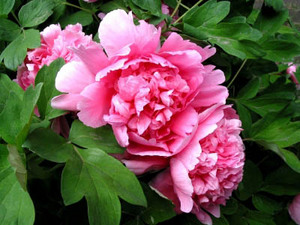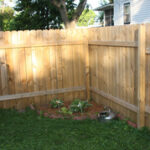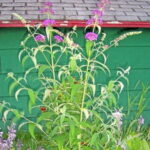My very first peony bush was a very gracious gift from my brother in law. His mother had passed away and he wanted to preserve her most loved peony bushes. I planted the bush by the garden gate and waited. The peony bush grew very quickly and the most beautiful blooms of pink sit atop the greenery like its crowing glory. My beautiful peony bush grew and grew. It had to be moved to a new and bigger area along the fence. I took all precautions with moving a new plant; but still it took two years for my beautiful pink blooms to reappear. Peonies do not like to be moved once planted. I have since added to the row of Peonies and have been very pleased with the colors and flowers they have produced for me to admire.
How to grow peony plants (paeonia)
Peony is a favorite old perennial. Peonies belong to the buttercup family.
Soil:
Peonies like a well enriched medium heavy well-prepared soil; it is best suited to the peony. Peony plants need lime in the soil or a high ph. Peonies like a sunny location or partial shade.
Fertilizer:
They also need yearly applications of plant food, either stable manure or artificial fertilizer, or both. To produce the largest blooms and to ensure the plant continues growing throughout the entire summer, apply fertilizer after blooms have ended
Propagation:
Propagation is done by division of the root clump. Select a good size root with one or more budlike growing points. Sever this clump and replant in newly improved soil. The best time to make these root cuttings is in the early spring, before the buds open. Peonies are also reproduced from seed and by budding buds on large roots. From seeds, blooms are obtained in 3 to 4 years.
The peony can be forced under glass for winter blooms. Lift the clumps in late fall and store in a cool to cold place. Bring them in the greenhouse 6 to 8 weeks before blooms are wanted. Replant the clumps, apply water maintaining constant temperature of 60 degree
Pest:
Several pests will attack your peony. The rose leaf chafer eats the blooms of outside grown plants. These are very difficult if not impossible to control. Blooms can be cut before they open much and taken indoors or the plants can be covered with netting, preventing pest from entering.
Dusting with a .3% pyrethrum, at times is effective. The European corn borer attacks the stems and leaf petioles causing them to die. Dust or spray during June with materials containing rotenone or pyrethrum.
Botrytis blight sometimes called bud blast or gray mold is the most common disease. It is much worse in wet weather. There are two botrytis one attacking the young shoots early in the spring, causing them to cease growth and turn black. The other attacking the leaves stems or crowns. The best remedy is cleanliness. Clean up and burn all diseased plant parts even cutting the leaf stalk below the ground. Any plant parts that show disease such as blasted buds, affected shoots should be removed and burned.
There are other rots that attack the peony plant stems and shoots; the remedy is the same as suggested for botrytis, plus Bordeaux, mixture spray frequently on the soil and foliage. It is also used for leaf blotch.
In warmer sections of the country the peony is attacked by the root knotting nematodes and eel worms. Dormant roots can be treated in 120 degree water for 30 minutes. Do not replant in same soil.
Ants on Peonies:
The sweet nectar on the bud is what the ants are feeding on. The ants do no harm to the flower. If cutting flowers to take indoors, dip upside down in cool water for 5 minutes, presto no ants.






